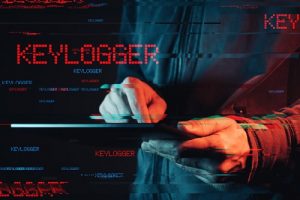
Hacking is a becoming an increasing problem. Hackers are finding new ways to steal sensitive data, as well as using old techniques, as more people use smartphones and computers. Keep reading to learn more about how to protect yourself against keylogger.
What is a keylogger?
Keylogger is shorthand for the keystroke logger. It is surveillance software that records each keystroke of a user. The Soviet Union created and deployed a keylogger for typewriters in 1970s.
A keylogger can be used for legitimate purposes today, including monitoring children's online activities or monitoring the computers of employers and employees. Keyloggers are often used to malicious ends. Keyloggers are used by cybercriminals to steal passwords and personal information.
Phishing attempts are one way keyloggers can be spread. The software infects your computer by clicking on or opening a fake attachment.
There are many ways to protect your company and information from keyloggers. These are four ways to be proactive.
Keylogger Protection and Prevention
- Training your employees to spot phishing attacks.
 It is important to educate your employees about phishing so they are aware of its basics. Cyber awareness is the first step. SpartanTec, Inc. can train your employees the current security practices.
It is important to educate your employees about phishing so they are aware of its basics. Cyber awareness is the first step. SpartanTec, Inc. can train your employees the current security practices.
Hackers are constantly evolving and finding new and innovative ways to steal data. Make sure your employees are aware of the latest attacks so that they can be prepared. Remind your employees to be cautious. Even when systems and caution are in place, sometimes things can still happen.
- Use a password manager
While keyloggers cannot track what is being typed, relying on the browser's remember password’ feature may not be the best way to protect your information.
For example, hackers can access Google Chrome's password settings to gain access to all your saved passwords. You should instead use an identity management and access control system that encrypts all passwords and allows for single-click login.
- Implement Multifactor Authentication
Multifactor authentication strengthens and enhances user logins through multiple steps in the login process. MFA requires two of three identifiers: username and password, hardware, phone, or biometrics.
The password can be recorded using a keylogger but the hacker who attempts to gain access to the account must have the same hardware or be you. Hackers who use a keylogger can't bypass this security measure, as there is no keyboard that can be tracked.
- Use software to help protect yourself against phishing attacks
A Third party vendor, such as SpartanTec, Inc., can help stop attacks by providing built-in software that alerts users and allows them to manage potential attacks. Automated systems that prevent these cyberattacks are the most effective defense, and it doesn't rely on human error.
Stop typing personal information or passwords if you suspect you might have been compromised by a keylogger. You can use your onscreen keyboard, which is available in your computer's settings under accessories - accessibility. After you have removed the keylogger, change your passwords.
Call SpartanTec, Inc. now if you need the help of an IT professional in protecting your network against keyloggers and other cyberthreat.
SpartanTec, Inc.
Myrtle Beach, SC 29577
(843) 420-9760
https://www.spartantec.com/
Serving: Myrtle Beach, North Myrtle Beach, Columbia, Wilmington, Fayetteville, Florence, Charleston

No comments:
Post a Comment